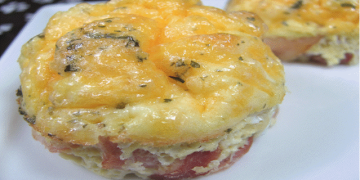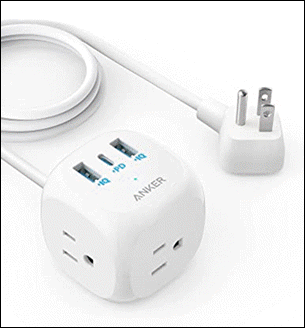Simon Handby
2025-06-16 06:32:00
www.trustedreviews.com
On a still summer’s day, a fan feels like a lifesaver. In sultry weather, moving the air around makes rooms feel fresher, and a simple breeze across the skin helps sweat evaporate, keeping you cool. But if you’re still feeling the heat, you’re probably wondering how to make a fan colder and more efficient. Here we look at the best tricks and tips to improve fan performance. And if you find it too warm to sleep, we’ll give you some tips on how to help cool down at night, too.
There’s little mystery to the way a desktop, personal, or floor-standing fan works – as its blades rotate, they kick up a draft. Liquids evaporate more quickly in moving air, so our sweat becomes much more effective at keeping us cool. So long as you’re in the breeze, and particularly if you’ve got bare skin, you’re going to notice the difference.
SQUIRREL_PLAYLIST_10207719
Even so, in the hottest weather, it might not feel like your fan’s making much difference – after all, it’s just shifting the same old hot air around rather than cooling the room as an aircon unit can (see our fans vs air conditioners explainer for more). But, there are a wealth of ways to improve fan performance, but let’s start with the basics. First, of course, you’ll want one of our best fans.
1. Use the lowest speed possible
First of all, it pays to understand that fans are usually most efficient at their lowest speed setting. Turning up the power shifts more air, but it uses more electricity, generating more heat and noise in the process. Try to stick with the slowest speed that produces an effective draft.

2. Keep it clean
Talking of efficiency, a regularly used fan quickly picks up house dust. This tends to accumulate around its intake vents and particularly on the leading edge of the fan blades. Over time it makes them less slippery, and the fan becomes less effective. Many fans with concealed blades – notably Dyson models – include a serviceable dust filter. If you want to improve fan performance, make sure you check and clean it as recommended by the manufacturer to prevent it restricting the airflow.


If you’ve got a standard fan, check it every month or so and clean off any significant dust buildup. With the fan unplugged, use a duster to remove dirt from around the air intakes and exits. If necessary, unclip or unscrew the blade cover and give the blades themselves a good clean – you might need to look in the manual to find out how to gain access.


If needed you can usually get away with using a damp cloth to wipe the blades and intakes of a fan, but always dry and reassemble the components before plugging the fan back in, and always defer to any cleaning instructions in the manual.
A clean fan should create a much stronger draft, but where should you point it? Opinions differ, particularly when it comes to features like oscillation. Generally speaking, point a small fan at the people who need it, and only use oscillation if it’s not possible to cover everyone without it. More powerful fans can circulate the air around an entire room – try bouncing their airflow off the ceiling, or aiming it along one of the walls to create a consistent, powerful swirl of air.
3. Open the windows – or don’t
So far we’ve assumed there’s not much natural breeze available, but where there is you may be able to turn it to your advantage. Don’t rush into opening up all the windows, though – on very hot days, particularly in the afternoon, your house may be far cooler than it is outside.
Keep curtains closed on the sunny side of the house, and only open the windows when you know it’s significantly cooler or less humid outside – typically overnight and in the early morning. Use a thermometer or weather station to compare real figures if possible, but failing that, use information from the weather forecast – or simply go by feel.
In breezy conditions, opening the windows alone could begin to cool your home, but in still weather a fan lets you accelerate the process. Open windows on opposite sides of the house, and place fans to either blow air directly out of a sunny window, or suck in air directly from a shaded one. While the latter will create a cool breeze, the former might produce a more powerful through-draft.


4. Use a dehumidifier
One of the main reasons that you feel hot in summer is because the humidity has increased, which prevents sweat from evaporating, preventing your body from cooling down naturally. Using a dehumidifier can help, sucking moisture out of the air.
This won’t make your house cooler, but it will turn wet heat into a dry one, making fans more effective. Something like the MeacoDry Arete One is a good choice, as it’s powerful, has a humidistat on it (it will turn off when relative humidity has hit the right level) and it’s not too expensive to run. You can also use a hose to permanently drain it into a sink; if you don’t do this, you’ll have to empty the water tank regularly – probably once a day in very hot and humid weather. Any other dehumidifier will work.
Make sure that you run your dehumidifier a few hours before you use a room or want to go to bed, as this will give it time to suck moisture out of the air, making your fans as effective as they can be.
With the MeacoDry Arete One’s humidistat, it will automatically wake itself up when it’s too humid and do its job automatically, so you can set and forget; other dehumidifiers will just run forever, which can make your air too dry. Typically, humidity between 40% and 60% is best.


5. Turn your fan into a cooler
If you still can’t get cool, you may need to try some more creative solutions. Evaporative coolers use the breeze from a fan to evaporate water, which in turn cools the stream of air – with care you can create something similar yourself.
Begin by finding a thin sheet of cotton or another wicking fabric, preferably with holes in it to allow air through. Soak the fabric, then wring out the excess water. Place it across the seat of a plastic garden chair so that it hangs down on either side, and point a fan so that it circulates air across the fabric. You should find that the damp fabric cools the stream of air as the water evaporates. You can enhance the effect by placing ice packs atop the fabric, and occasionally re-wetting it with cold water – be careful to keep any running liquid well away from the fan.
Alternatively, you could skip the fabric and place ice or ice packs directly in the airflow in front of the fan. One way to achieve this without condensation running everywhere is to place the frozen items on a shallow tray on the ground, then point the fan to blow air across them from perhaps a metre away. You don’t have to use ice – in the summer this is a great way to defrost frozen meals or drinks.


There are other ways to build your own evaporative cooler. It seems a shame not to line-dry washing on a summer’s day, but if you’ve got a clothes dryer or radiator racks, simply pointing a fan at your washing will dry it quickly and create a similar cooling effect. If you find this effective, try selecting a slower spin speed to leave washing wetter. And if you’re already up to date with the washing, just put clean towels through a cold rinse programme using the slowest available spin.


Just be aware that if your room is very humid, then it’s hard for moisture to evaporate, reducing the effectiveness of these tricks. Anyone living by the coast will know this already, based on how long it can take clothes to dry inside, and how furniture can often feel damp to the touch. For very humid conditions, a dehumidifier or air conditioning unit will be better, as they remove moisture from the air.
6. Too warm to sleep?
On a hot, still night, a fan can make the difference between sleeping or not. If you’ve got a quiet, powerful fan like the MeacoFan 650 Air Circulator, use a low setting and point it just above the bed to create a gentle circulation of air.
However, some other powerful fans are too noisy to sleep with. Place noisy fans outside your bedrooms, but point them through the open doorway to create a compromise between noise and air circulation. Remember to open up as many windows as possible before you go to bed – with luck you’ll create a fresh enough environment to get a decent night’s sleep, and wake up to a much cooler home.
Don’t forget to cool yourself down before you go to sleep. A cold show can lower your body temperature before you get into bed. You can also try a cold compress on your head while you try to go to sleep.
Meet the Anker 20W USB C Power Strip, the ultimate desk power solution! With 9,659 ratings and a stellar 4.6 out of 5 stars, it’s a trusted favorite for its reliability and performance. Over 3K+ units were bought in the past month!
This compact power cube features 3 AC outlets, 2 USB-A ports, and 1 USB-C port to power everything on your desk with ease. Equipped with a 7-point safety system, including fire resistance, circuit-overload protection, and short-circuit protection, it gives you peace of mind. Plus, enjoy super-fast charging for your devices.
Grab this versatile power strip for only $13.99. Buy Now on Amazon!
Help Power Techcratic’s Future – Scan To Support
If Techcratic’s content and insights have helped you, consider giving back by supporting the platform with crypto. Every contribution makes a difference, whether it’s for high-quality content, server maintenance, or future updates. Techcratic is constantly evolving, and your support helps drive that progress.
As a solo operator who wears all the hats, creating content, managing the tech, and running the site, your support allows me to stay focused on delivering valuable resources. Your support keeps everything running smoothly and enables me to continue creating the content you love. I’m deeply grateful for your support, it truly means the world to me! Thank you!
|
BITCOIN
bc1qlszw7elx2qahjwvaryh0tkgg8y68enw30gpvge Scan the QR code with your crypto wallet app |
|
DOGECOIN
D64GwvvYQxFXYyan3oQCrmWfidf6T3JpBA Scan the QR code with your crypto wallet app |
|
ETHEREUM
0xe9BC980DF3d985730dA827996B43E4A62CCBAA7a Scan the QR code with your crypto wallet app |
Please read the Privacy and Security Disclaimer on how Techcratic handles your support.
Disclaimer: As an Amazon Associate, Techcratic may earn from qualifying purchases.

















































![[Download] Intuitive 3D Modeling | Abstract Sculpture | FLIGHT | DANA KRYSTLE](https://techcratic.com/wp-content/uploads/2025/08/1755630966_maxresdefault-360x180.jpg)







































![[DEBUT COVER] Intergalactic Bound – Yunosuke / CircusP [MIKU EXPO 10th]](https://techcratic.com/wp-content/uploads/2025/08/1755598927_maxresdefault-360x180.jpg)















